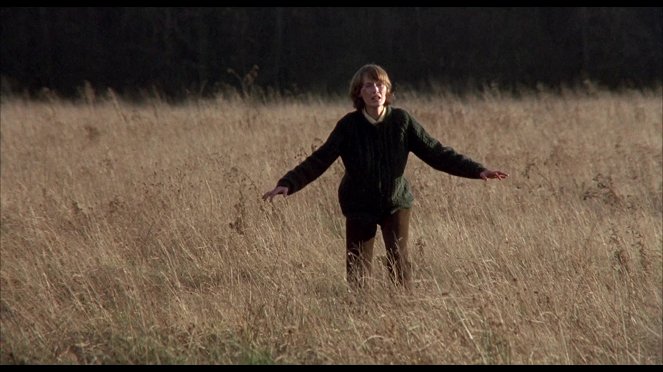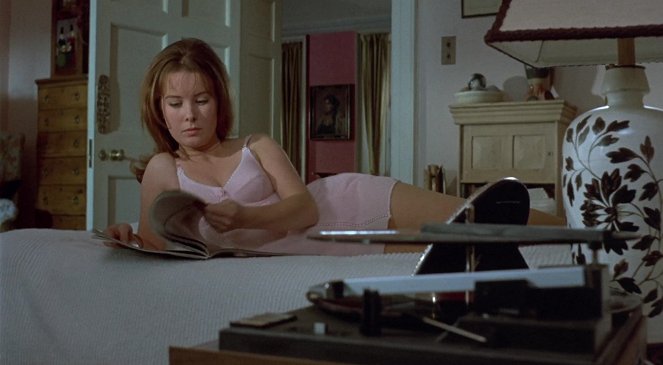Realização:
Richard FleischerArgumento:
Brian ClemensCâmara:
Gerry FisherMúsica:
Elmer BernsteinElenco:
Mia Farrow, Dorothy Alison, Robin Bailey, Diane Grayson, Barrie Houghton, Michael Elphick, Max Faulkner, Norman Eshley, Lila Kaye, Donald Bisset (mais)Sinopses(1)
Tense thriller starring Mia Farrow as a blind young woman (Mia Farrow) who goes to live in the English countryside with relatives. Out on a date with a boyfriend, she escapes the fate of her relatives who are murdered by a crazed killer but finally makes the gruesome discovery of their bodies and has to flee on horseback. She is rescued but the murderer is still out there. (Powerhouse Films)
(mais)Vídeos (1)
Críticas (2)
In terms of motif, nothing completely new even then, because many people will remember at least the 1967 film Wait Until Dark. But Mia Farrow is very good as Sarah and part of the filming must have been an unenviable physical strain for her. Of course, we don’t know how we would behave in her situation, and so I sometimes wonder if she was being a moron, but who knows. A psychopath murders, and surely he needs no explanation for his actions, as psychopaths often murder for pleasure. But this one had a reason, as the observant viewer will surely discover early on. Well, people can take revenge for lesser things. Of course, Sarah's movements in the countryside are a bit out of the realm of fantasy, but it's a movie. Elmer Bernstein’s score is great, and so are the visuals – the ride through the autumn forest is incredibly poetic. And because it's just a film, there's a lot to look past, and you will certainly enjoy the suspense.
()
A diligent interpretation of one of the most hackneyed themes in the horror genre, namely the “fragile heroine in danger”. Just as Sarah, the blind protagonist, gets her bearings mainly thanks to objects in the setting, the props are also crucial for building suspense. They serve as clues, which are sometimes false (the vase on the staircase, the gardener’s shoes), as to what might happen and what might be important for the narrative. Viewers’ frustration arises from the inability to warn the protagonist of the dangers that are seen, as well in the ostentation with which the film conceals from us a key piece of information, namely the killer’s identity. All we are shown of him is his feet, and that is unfortunately not utilised to make a more imaginative point (when we would know who the killer is based on his shoes, whereas the other characters would remain unaware). The deviations from the central, substantially uneven duel, whether toward romance or western (!) are not atmospherically as well-thought-out as Fleischer’s work with the enclosed space. However, I consider the very poor clarification of the motive for the crime committed to be a fundamental failure. Everything essential about the killer’s damaged mind is conveyed to us in the prologue as the opening credits roll (violent films, violent toys), which may have carried a certain weight in Britain in the 1970s, but today it can be seen as a mockery of all of the serious research that has since been carried out in field of violent behaviour. 65%
()




Publicidade